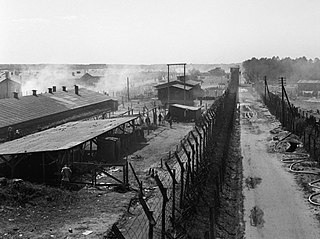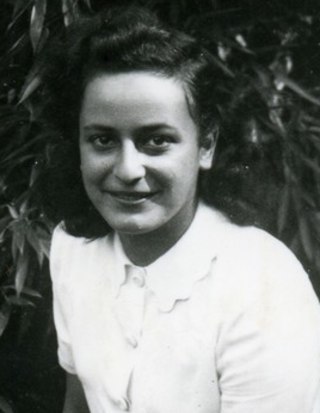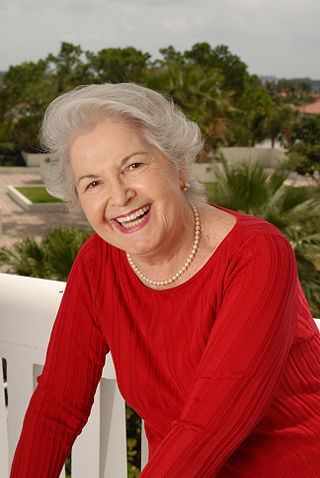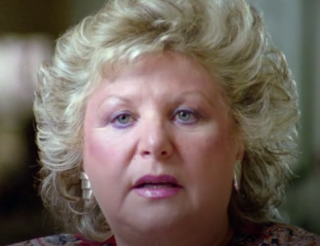Related Research Articles

Camp Westerbork, also known as Westerbork transit camp, was a Nazi transit camp in the province of Drenthe in the Northeastern Netherlands, during World War II. It was located in the municipality of Westerbork, current-day Midden-Drenthe. Camp Westerbork was used as a staging location for sending Jews to concentration camps elsewhere.

Bergen-Belsen, or Belsen, was a Nazi concentration camp in what is today Lower Saxony in northern Germany, southwest of the town of Bergen near Celle. Originally established as a prisoner of war camp, in 1943, parts of it became a concentration camp. Initially this was an "exchange camp", where Jewish hostages were held with the intention of exchanging them for German prisoners of war held overseas. The camp was later expanded to hold Jews from other concentration camps.

Josef Kramer was a Hauptsturmführer and the Commandant of Auschwitz-Birkenau and of the Bergen-Belsen concentration camp. Dubbed The Beast of Belsen by camp inmates, he was a German Nazi war criminal, directly responsible for the deaths of thousands of people. He was detained by the British Army after the Second World War, convicted of war crimes, and hanged on the gallows in the prison at Hamelin by British executioner Albert Pierrepoint.
The Holocaust has been a prominent subject of art and literature throughout the second half of the twentieth century. There is a wide range of ways–including dance, film, literature, music, and television–in which the Holocaust has been represented in the arts and popular culture.

Herzogenbusch was a Nazi concentration camp located in Vught near the city of 's-Hertogenbosch, Netherlands. The camp was opened in 1943 and held 31,000 prisoners. 749 prisoners died in the camp, and the others were transferred to other camps shortly before Herzogenbusch was liberated by the Allied Forces in 1944. After the war, the camp was used as a prison for Germans and for Dutch collaborators. Today there is a visitors' center which includes exhibitions and a memorial remembering the camp and its victims.

Ceija Stojka was an Austrian Romani writer, painter, activist, and musician, and survivor of the Holocaust.

Lucille Eichengreen was a survivor of the Łódź (Litzmannstadt) Ghetto and the Nazi German concentration camps of Auschwitz, Neuengamme and Bergen-Belsen. She moved to the United States in 1946, married, had two sons and worked as an insurance agent. In 1994, she published From Ashes to Life: My Memories of the Holocaust. She frequently lectured on the Holocaust at libraries, schools and universities in the U.S. and Germany. She took part in a documentary from the University of Giessen on life in the Ghetto, for which she was awarded an honorary doctorate.

Hélène Berr was a French woman of Jewish ancestry and faith, who documented her life in a diary during the time of Nazi occupation of France. In France she is considered to be a "French Anne Frank". She died from typhus during an epidemic of the disease in Bergen-Belsen concentration camp that also killed Anne Frank and her sister Margot.

Aranka Siegal is a writer, Holocaust survivor, and recipient of the Newbery Honor and Boston Globe-Horn Book Award, both awarded to her in 1982. She is the author of three books, the best known of which is Upon the Head of the Goat: A Childhood in Hungary 1930-1944, a memoir of her childhood in Hungary before her 12-month imprisonment in the Nazi concentration camps, Auschwitz – Birkenau and Bergen-Belsen.
Berthe Meijer was a Dutch Holocaust survivor and author. In her memoir of her time imprisoned in Bergen-Belsen concentration camp, she wrote of knowing Anne Frank, which was corroborated by other camp survivors. She was also a culinary journalist and published a cookbook.
Rywka Lipszyc was a Polish-born Jewish diarist and Holocaust survivor. She was deported to Auschwitz-Birkenau concentration camp followed by a transfer to Gross-Rosen and forced labor at its subcamp in Christianstadt. She was then taken on a death march to Bergen-Belsen, and was liberated there in April 1945. Too ill to be evacuated, she was transferred to a hospital at Niendorf, where the record of her life ended.
Hetty Esther Verolme is an Australian writer, educator and Holocaust survivor. She now lives in Australia. She has written about her experiences as a child in Bergen-Belsen, and is a founding trustee of Children of Belsen and the Holocaust Trust.
Nanette Konig-Blitz is a Bergen-Belsen concentration camp survivor and former classmate of Anne Frank. She has lived in São Paulo, Brazil since 1953. In 2015, she published a book about being a Belsen survivor called Eu Sobrevivi ao Holocausto. On Holocaust Memorial Day 26 January 2018, Nanette's book was published in English with the title Holocaust Memoirs of a Bergen-Belsen Survivor & Classmate of Anne Frank.

Odette Abadi was a French physician, and member of the Resistance during World War II (WWII). She was a co-founder of the Réseau Marcel which saved more than 500 Jewish children from death during The Holocaust. Although she was arrested and tortured by the Gestapo, she refused to divulge the locations of the hidden Jewish children and was sent to two concentration camps. After Bergen-Belsen concentration camp was liberated in 1945, Abadi continued her profession as a doctor, with a focus on tuberculosis.
Margot Cecile Heumann was a German-born American Holocaust survivor. As a lesbian, she was the first queer Jewish woman known to have survived Nazi concentration camps.
Denise Holstein is an Auschwitz concentration camp survivor and Holocaust witness, who was liberated on 15 April 1945. As a Holocaust witness, Holstein tells her story in two books and in a documentary made by a student from the Lycée Corneille in Rouen. For almost fifty years, Holstein never spoke about her life before writing about it. As a Holocaust witness, Holstein visits school children, to describe and share her experiences.
Ruchama Rachel Rothstein is a Holocaust survivor and the author of Here There Is No Why. Her aunt Ella Blumenthal and she were the only members of their immediate family to survive the Holocaust.

Marianne "Mausi" Grant was a Czech-Scottish Jewish artist, who survived the Holocaust after being imprisoned in three successive concentration camps. Grant was born during the interwar period and came from a prosperous family. From a young age, Grant loved drawing and painting but her plans to study art at university were stymied after the invasion of Czechoslovakia in March 1939 by Nazi Germany. In June 1939, the Nuremberg racial laws were implemented and Grant and her family faced increasingly stringent restrictions that lead them to be interred at a camp in Prague and then later deported to the Theresienstadt Ghetto in May 1942. Grant spent 18 months in the ghetto before being transferred to Auschwitz concentration camp. In Auschwitz, Grant used her painting skills in exchange for food and medicine and to make the children's block where she worked, more homely. However, her work come to the notice of Josef Mengele, who used Grant to paint family trees of dwarfs and twins. After 7 months, Grant was sent to forced labour battalion and later Bergen-Belsen concentration camp. When she was liberated, she was sent to Sweden to recuperate and met her future husband. They married and settled in Glasgow. After the war, she finished her education at the Glasgow School of Art. In 2002, Grant's paintings and drawings were exhibited at Kelvingrove Art Gallery and Museum. 22 members of Grant's family died in the Holocaust.

Lilly Appelbaum Malnik is a Belgian-American Holocaust survivor who helped create the United States Holocaust Memorial Museum. She was captured by Nazi soldiers in 1944, during the German occupation of Belgium, and was imprisoned at the Mechelen transit camp in Belgium, Auschwitz concentration camp in Poland, and the Bergen-Belsen concentration camp in Germany. She was liberated from Bergen-Belsen in April 1945 by the British Army. Malnik's mother, two siblings, aunt and uncle, and grandaunt and granduncle were all killed during The Holocaust in Belgium. After World War II, she emigrated to the United States and was reunited with her father. She married Abraham Malnik, a Lithuanian Holocaust survivor, and they assisted in the founding of the United States Holocaust Memorial Museum. With her granddaughter, the American social media content creator Miriam Ezagui, Malnik has made TikTok videos detailing life in concentration camps.
References
- ↑ Zullo, Allan (2005). Survivors: True Stories of Children in the Holocaust . Scholastic Paperbacks. ISBN 978-0439669962.
- ↑ Levy, Ursula (17 February 2006). "Truthful Account". Voice of the People. Chicago Tribune . Retrieved 23 September 2011.
- ↑ "Echoes and Reflections: A Multimedia Reflection on the Holocaust" (PDF). Ursula Levy: Visual History Biography. Anti-Defamation League . Retrieved 23 September 2011.
- ↑ Levy, Ursula (1987). The Incredible Years.
- ↑ Levy, Ursula (November 1985). "Parent and Teacher Perception of Depression in Children". Journal of School Health. 55 (9): 367–369. doi:10.1111/j.1746-1561.1985.tb04150.x. PMID 3853042.
- ↑ Levy, Ursula (2005). The Spirit Builder: The Life and Times of Dorothy Becker. Skokie, IL: Wahrheitsucherin Publishing. p. 400. ISBN 0-615-12862-9.